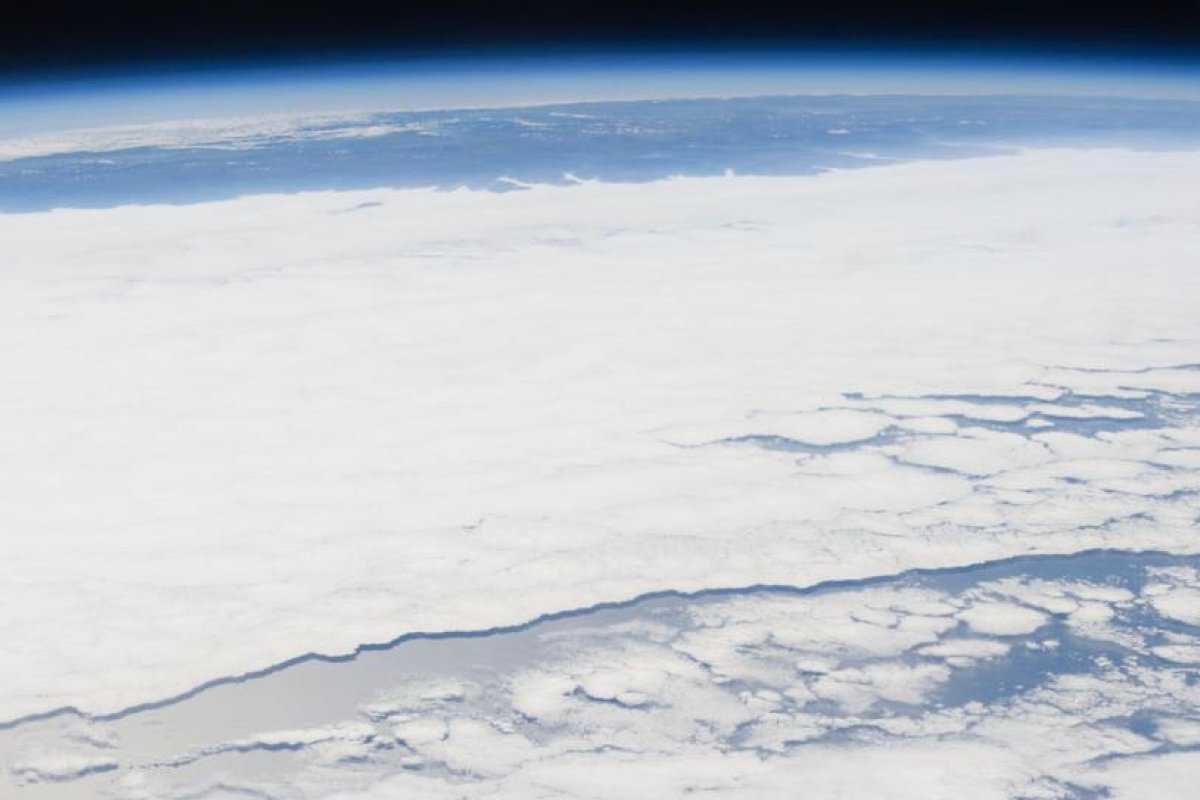
Will There Be Life On Earth?
An Earth Day reflection on trusting our eyes
“Use your common sense. Believe your eyes. What you saw, you saw”
–Prosecutor Steve Schleicher, in the closing arguments of the Derek Chauvin trial
“We are one planet, one human family, and as brothers and sisters we must look out for each other. I don’t think a moral argument needs to be much more complicated than that.”
–Cardinal Michael Czerny, who heads the section on migrants and refugees at the Vatican’s Dicastery for Promoting Integral Human Development
Earlier this week, a quiet celebration at NASA’s Jet Propulsion Laboratory marked a small but significant milestone: the first powered, controlled flight originating from another planet. After six years of work by the JPL team, a tiny rotorcraft named Ingenuity was launched from the Mars space rover on Monday, hovering over a Martian crater for 39 seconds. While the flight was over in the blink of an eye and likely escaped the notice of most of us, it extends the capacity of NASA’s Perseverance project to search for signs of ancient microbial life on the red planet. An informal photo on NASA’s Mars Exploration website captures the spontaneous jubilation of the helicopter team in front of a wall-sized proclamation of the project’s motto: “DARE MIGHTY THINGS.”
Instances of exuberance and expressions of aspiration have been all too rare of late on our home planet, and contemporary sightings of life on Earth are certainly more ambiguous than the traces of ancient Martian life the Perseverance project hopes to find. Indeed, today’s fifty-first celebration of Earth Day might well be eclipsed by the complex effects of the same environmental degradation about which the holiday's proponents have long been warning us. Our world-wide COVID pandemic has entered its second year, receding in some places but still surging in others. Outbreaks of violence and injustice have spiked across the globe as well, fueled by generations of grinding exploitation of our earth and its human resources. 253.7 million people were displaced by climate disasters between 2008 and 2018; that staggering number is expected to grow even more rapidly over the coming decades. While the precise relationships between our compromised environment and our degraded human community are complicated to trace in their particulars, the utter interdependence of people, place and planet seems irrefutable: when one suffers, we all suffer.
It is difficult, of course, to keep such an implacable truth at the center of our lives for long. Ingenuity and perseverance are evocative names for robotic interplanetary explorers; as human realities, they tend to be much less durable. We can innovate under pressure and endure when we must: the heroic efforts of frontline workers and so many others over the past year are proof of such possibility. But as a culture, our attention span is narrow; our resolve has a short battery life. Over the past few months in the US, we have been easily distracted from our concern for the earth and one another by the good news that COVID vaccines are quickly becoming both more available and more accepted, positivity rates are trending downward, children are returning to their classrooms, and families are reuniting after a year spent in quarantine. Airlines are anticipating full flights once again and urging us to book those postponed vacations, and businesses are eager to welcome consumers back inside their stores. It is tempting to join the rush to relax, return, and recover, turning our backs on the dark night of our pandemic exile and the enervating vulnerability and demanding contingency that we encountered there. Perhaps, our leaders wager, there might be life on Earth after all if we can simply leave our global trauma behind and “build back better” than before.
Faith communities, too, are looking forward to the resumption of in-person worship gatherings, if they have not already attempted to do so. After a second round of Passover, Easter, and Ramadan observances complicated by social distancing and remote technology, worshippers are newly aware of the sustaining presence of community and are eager to worship in one another’s presence—sometimes overly so. In their zeal, in fact, some Christian churches have defied their localities’ pandemic restrictions on assembly altogether. A newly but narrowly “religious” Supreme Court has upheld their right to gather, regardless of their health or the safety of others, as a matter of “religious liberty.” For those whose commitments are shaped by this melding of God, country, and the free market, life on earth is life lived as our own consciences and appetites see fit.
Many other faith communities across the US, however, find themselves in a prolonged but energizing season of discernment, definition, and redirection. After years of dwindling urgency and relevance, they are rediscovering their faith and their purpose in acts of service on behalf of their hurting neighbors. Empty sanctuaries have become food pantries, mutual aid centers, vaccine distribution sites, shelters for immigrants, and aid stations for protesters. Online worship services have extended access to those who have felt unwelcome in traditional services, given expression to voices and concerns that are often not represented in traditional religious spaces, and offered opportunities for connection, spiritual practice and mutual care when and where it was desperately needed. For these communities, religion has found expression not in a demand to be “open for business,” nor through a return to the status quo, but in believers’ full-hearted practice of prayer as attentive, active presence in the life of the world. Life on earth, for those unable to forget the past and unwilling foreclose on the future of the planet, means full participation in securing life for all.
It is hard to imagine a moment in which the stakes are higher, or the choices more clear. None of us has been spared that glimpse of our own certain mortality during this last year, nor can we ignore fresh knowledge of our planet’s rising temperature and increasingly severe weather patterns, the concomitant urgency of our brothers and sisters along our southern border while we maintain the lowest refugee cap in decades, or the consuming cancer of racial violence in our body politic, with its impossibly slow and unreliable justice system. We have all seen the video—or, as our faith traditions might put it, “we are all witnesses to these things.” It is high time to use our common sense for the common good: to believe our eyes, to claim the earth as our home and its suffering as ours as well, to become purveyors of collective justice and care with as much ingenuity and perseverance as we employ when exploring places not our own. What you saw, you saw…I don’t think a moral argument needs to be more complicated than that.
Photo: Earth observation by a crew member on board the International Space Station on July 31, 2013. Courtesy of NASA.
Sightings is edited by Daniel Owings, a PhD Candidate in Theology at the Divinity School. Sign up here to receive Sightings via email. You can also follow us on Facebook and Twitter. The views and opinions expressed in this article are those of the author and do not necessarily reflect the position of the Marty Center or its editor.


